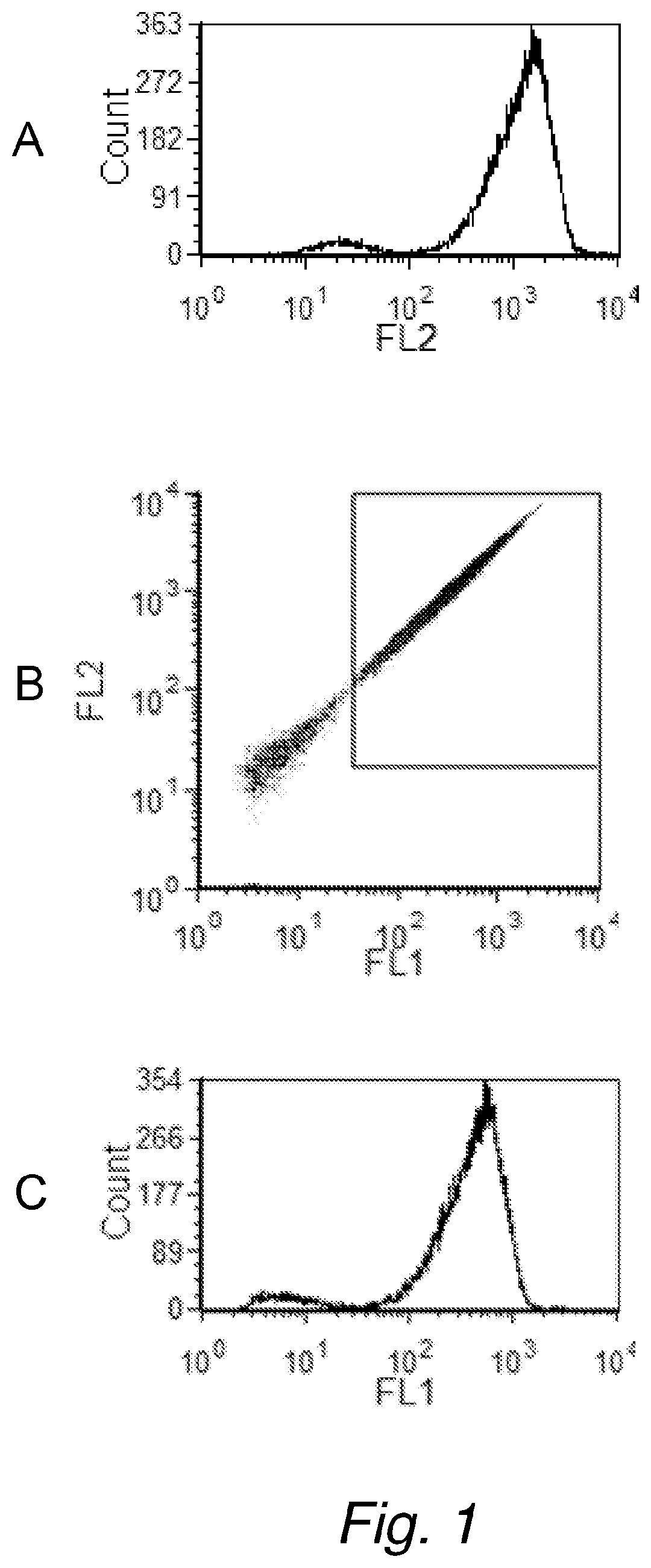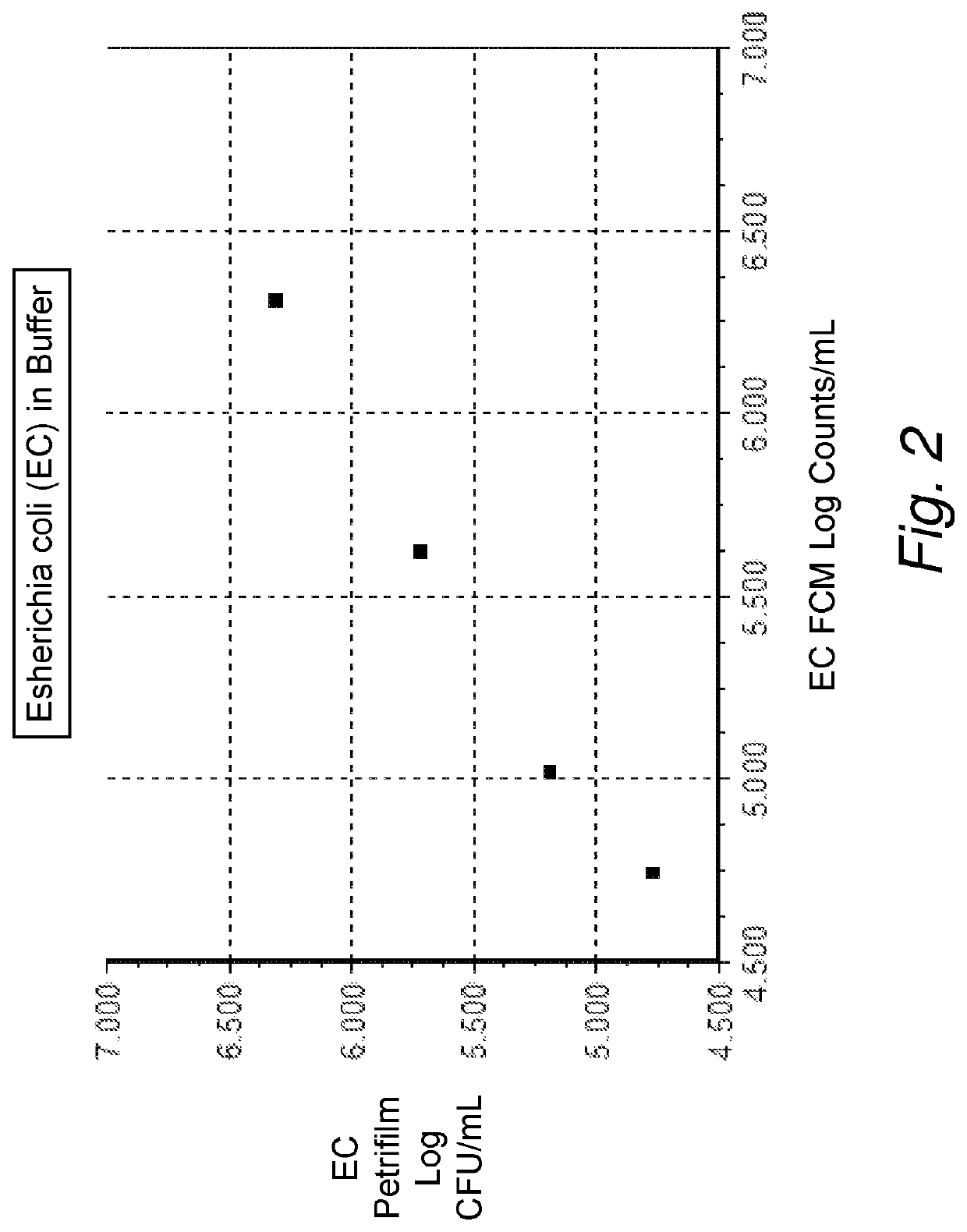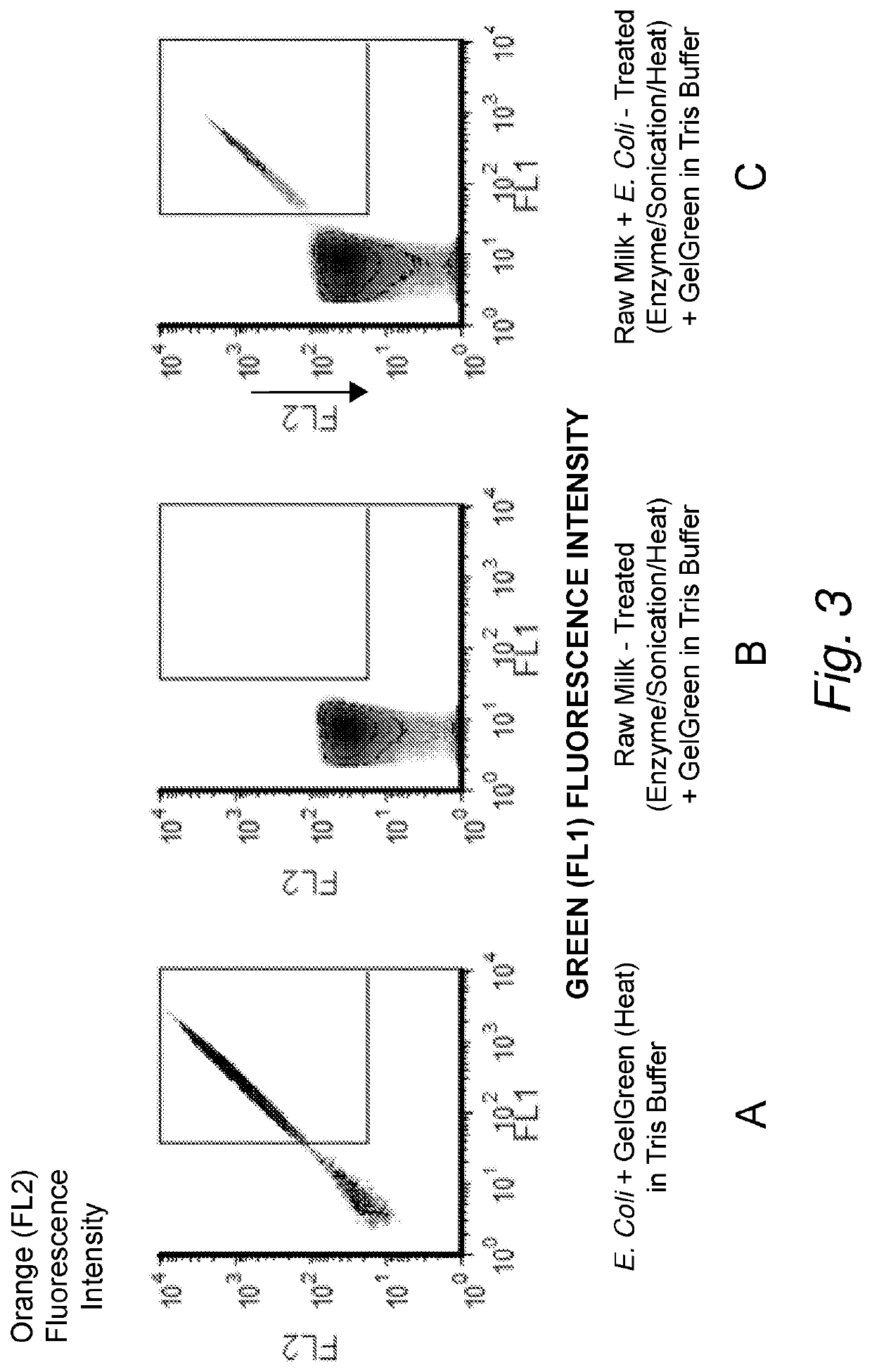Detection of cells in a liquid sample
a liquid sample and cell technology, applied in the field of detection of cells in liquid samples, can solve the problems of milk unsuitable for human consumption, harmful to consumers, mastitis in cows, etc., and achieve the effects of reducing interfering fluorescence signals, simple and rapid method, and efficient entry of dyes
- Summary
- Abstract
- Description
- Claims
- Application Information
AI Technical Summary
Benefits of technology
Problems solved by technology
Method used
Image
Examples
example 1
Validation of GelGreen™ Staining of Bacteria
[0198]First, an experiment was performed to confirm that bacterial counts obtained on the flow cytometer using GelGreen™ did correlate with traditional plate counts. For this, the Petrifilm method was selected (Standard Methods for Examination of Dairy Products 17th Edition 2004. Edited by H. M. Wehr and J. R. Frank. American Public Health Association, 800 I Street, NW, Washington D.C. 200001. Chapter 6.040), rather than a poured agar plate method, because of ease of use. Escherichia coil (E. coli) cultures were grown at 36° C. in Trypticase Soy Broth (TSB) in a culture tube. A staining composition was prepared as follows: The nucleic acid dye GelGreen™ (from Biotium) was diluted to 1× from the 10,000× commercially available stock, into Tris-buffered saline (100 mM Trizma base, 100 mM Trizma HCl, 150 mM NaCl, pH 8.5), which was preheated to 50° C. The used dilution of 1:10,000 of the GelGreen™ is in accordance with the manufacturer's recom...
example 2
Staining of E. coli in Raw Milk Treated with GelGreen™
[0199]To show where the bacteria in the FL1 and FL2 signal plots can be expected, bacteria were first counted in the staining composition without adding any milk. A culture of E. coli were grown at 36° C. in Trypticase Soy Broth (TSB) in a culture tube. The nucleic acid dye GelGreen™ was diluted into Tris-buffered saline, at approximately pH 8.5, which was preheated to 50° C. The E. coli culture was removed from the 36° C. incubator and a small volume was diluted 1:100 into the preheated staining composition and incubated for approximately 4.5 min at 50° C. The stained E. coli was analyzed on the flow cytometer and the FL1 and FL2 fluorescence channels were used to identify the stained bacteria (FIG. 3A).
[0200]To show how the FL1, FL2 signals look like in un-spiked raw milk, low bacterial count raw milk was analyzed. The locally obtained raw milk (generally from a farm) has a very low bacteria count ranging from 1000 to 50,000 CF...
example 3
Validation of Bacterial Flow Cytometry Counts in Raw Milk
[0202]A selection of gram negative and gram positive bacteria were chosen to be placed into raw milk and processed and analyzed following the GelGreen™ raw milk treatment staining protocol as disclosed in example 2. Results are shown in FIG. 4. The gram positive organisms selected were Listeria monocytogenes (Lm), Staphylococcus aureus (Sa), and Bacillus cereus (Bc). The gram negative organisms selected were Pseudomonas aeruginosa (Pa) and Escherichia coil (Ec). Different concentrations of each culture were placed into a sample of raw milk and kept at 4° C. until processed. Each sample of raw milk with an individual bacterial culture was processed and analyzed following the GelGreen™ protocol as described in example 2. Each sample of raw milk with an individual bacterial culture was appropriately diluted in Butterfield's PBS and 1 mL was plated on Petrifilms in duplicate and CFU / mL were obtained. The resulting Log FCM counts p...
PUM
| Property | Measurement | Unit |
|---|---|---|
| temperature | aaaaa | aaaaa |
| temperature | aaaaa | aaaaa |
| temperature | aaaaa | aaaaa |
Abstract
Description
Claims
Application Information
 Login to View More
Login to View More - R&D
- Intellectual Property
- Life Sciences
- Materials
- Tech Scout
- Unparalleled Data Quality
- Higher Quality Content
- 60% Fewer Hallucinations
Browse by: Latest US Patents, China's latest patents, Technical Efficacy Thesaurus, Application Domain, Technology Topic, Popular Technical Reports.
© 2025 PatSnap. All rights reserved.Legal|Privacy policy|Modern Slavery Act Transparency Statement|Sitemap|About US| Contact US: help@patsnap.com



